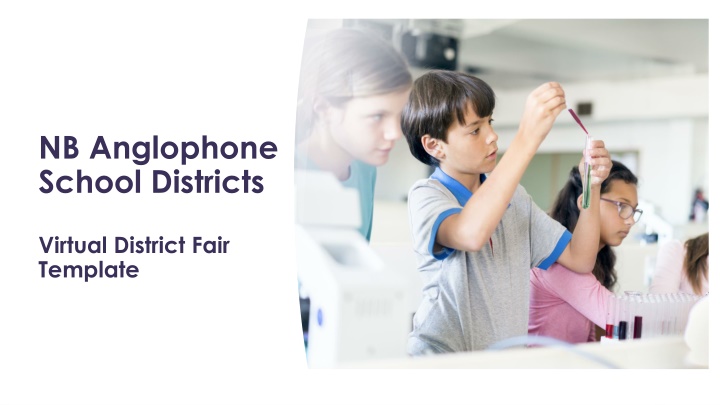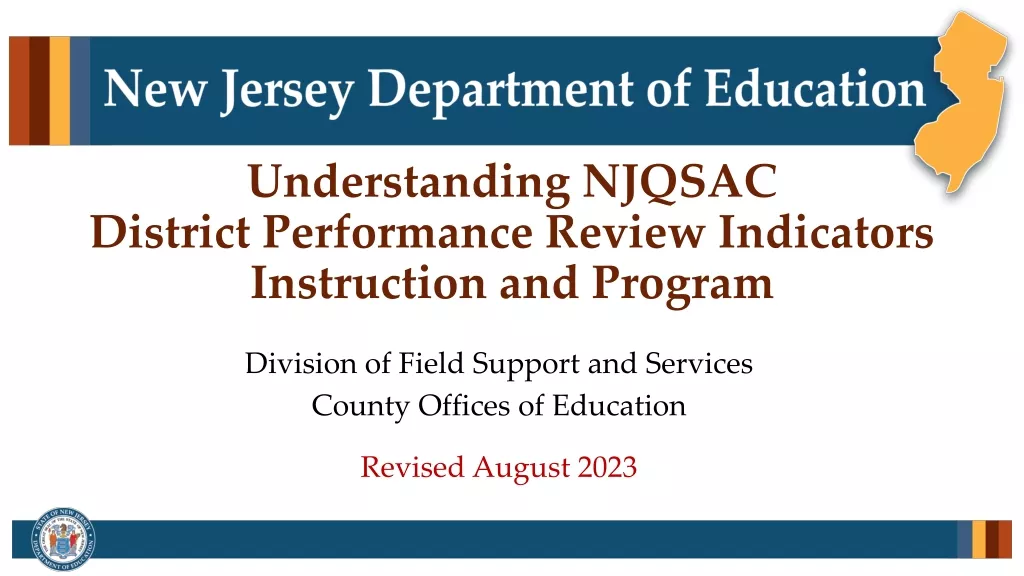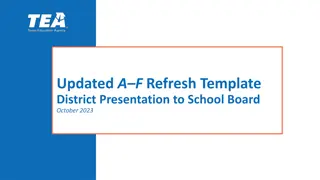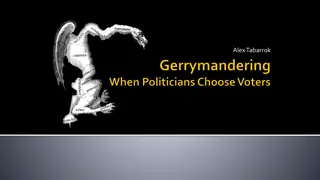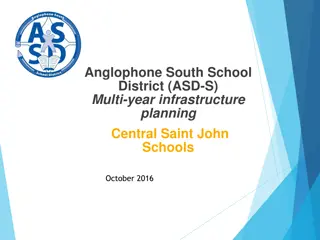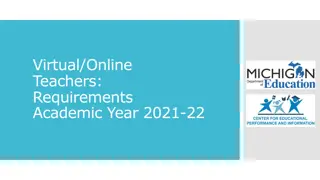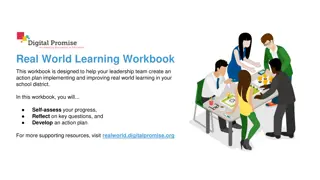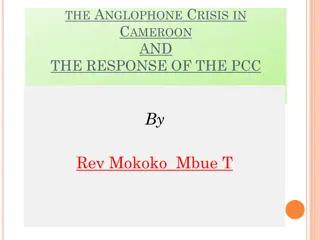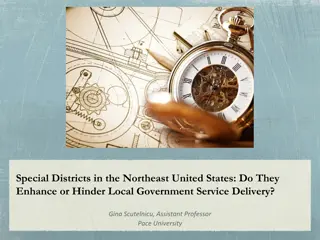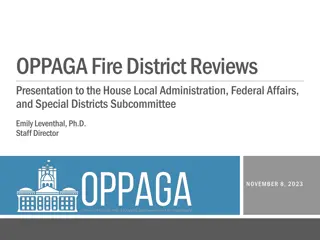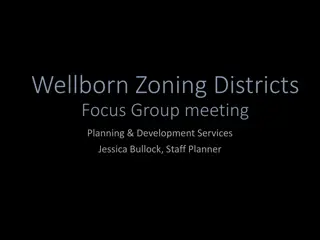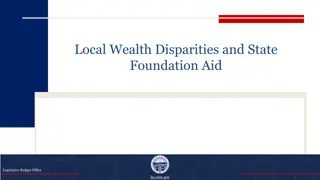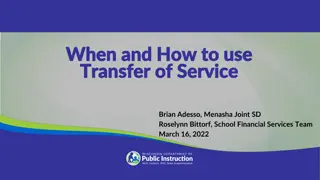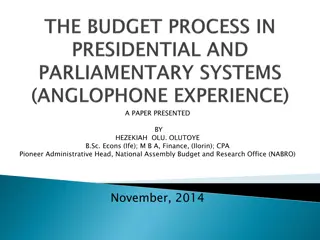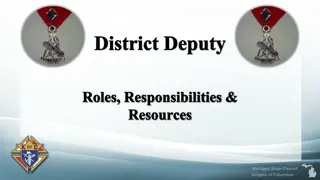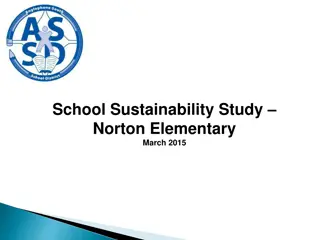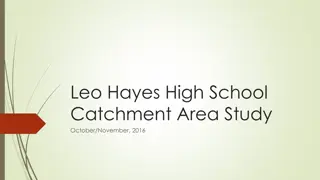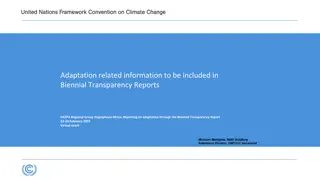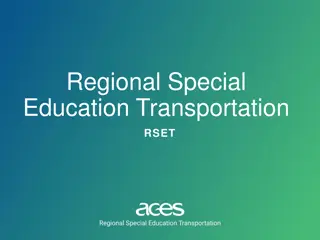Virtual District Fair Template for NB Anglophone School Districts
This template is designed to assist students in creating a presentation for the District level by mirroring the Sections and Descriptors used on the ProjectBoard site. It includes sections for Summary, Communication via Video, Initiate and Plan, and Perform and Record. The Summary section, targeted at a middle school audience, requires concise information on the project. The Communication - Video section allows students to present their work in one minute or less. Initiate and Plan section focuses on the narrative behind the project, while Perform and Record addresses the execution. Overall, this template provides a structured framework for students to showcase their projects effectively.
Download Presentation

Please find below an Image/Link to download the presentation.
The content on the website is provided AS IS for your information and personal use only. It may not be sold, licensed, or shared on other websites without obtaining consent from the author.If you encounter any issues during the download, it is possible that the publisher has removed the file from their server.
You are allowed to download the files provided on this website for personal or commercial use, subject to the condition that they are used lawfully. All files are the property of their respective owners.
The content on the website is provided AS IS for your information and personal use only. It may not be sold, licensed, or shared on other websites without obtaining consent from the author.
E N D
Presentation Transcript
NB Anglophone School Districts Virtual District Fair Template
This template mirrors the Sections and Descriptors that will be used on the ProjectBoard site. Virtual The purpose of this template is to help students build/construct a presentation prior to submitting online at the District level. These sections are the same as those on the digital platform, allowing students to cut and paste their work onto the site when submitting. ProjectBoard Template
Summary: MAXIMUM 150 WORDS AND 1 IMAGE This is the first section that people will see after they click on your project. The summary text should be written for a middle school (age 11-13) audience avoid scientific jargon or acronyms. Keep it concise to hold their attention. Ask a family member or friend to read it: Does it interest them? Is it easy to understand? A recommended format would be: One or two sentences to introduce the question or problem and catch the reader s attention. Two or three sentences describing what you did. One or two sentences summarizing the main results or explaining your solution. Two or three sentences explaining what the main results or testing of your solution reveal and how they compare with what others have done. One or two sentences to describe the importance of your findings or innovation. You will be able to add an image that represents your project.
Communication - Video Tell us about your project in 1 minute or less! This is your opportunity to talk to your audience face-to-face. Introduce yourself and tell us what got you interested in the question or problem, what you did and what it means. Focus on the main parts of your project: Why? How? What? Remember, one minute is a very short time! Prepare a simple script and time yourself before recording. Speak clearly and slowly. Show off your prototype, equipment or use a model. Upload your video to YouTube or directly to the site. We encourage you to set the privacy to Unlisted. If you set it to Private , people won t be able to watch your video. Use the link button in the image area above to add the link to your video.
Initiate and Plan: Why? Tell us your story! You can use project sections, such as purpose, hypothesis and background information or a more narrative approach. Some ideas you could include: Why did you do this project? What or who inspired you to do this project? What question were you trying to answer or what problem were you trying to solve? Who could benefit from your project? How can it make the world a better place? MAXIMUM 250 WORDS AND 5 IMAGES/FIGURES
Perform and Record - How? How did you perform your experiment or develop your solution? You can use project sections, such as materials, methods, procedures, design process and testing procedure or a more narrative approach. Figures, photos, or prototype sketches can be used to show what you did. Some ideas you could include: How did you do your background research? How did you identify relevant and trustworthy sources of information? What was your experiment or design process? How did you design and test your solution or prototype? What materials did you use? How did you collect your data? How many samples did you test? How did you control the variables? MAXIMUM 300 WORDS AND 5 IMAGES/FIGURES
Analyze and Interpret: What? Tell us your results! What did you find out? You can use project sections, such as results, tables and graphs or a more narrative approach. Here are ideas that you could include in this section: What are the main results or findings of your project? How does your prototype work? Discuss your results. If you used statistics, explain why you chose the methods you used? What are the main results or findings of your project? How does your prototype work? Discuss your results. If you used statistics, explain why you chose the methods you used? Show your results in graphical form only include graphs or figures that summarize your data and support your conclusion. It s not necessary to show all the data you collected. Please, don't include every graph or table! MAXIMUM 500 WORDS AND 5 IMAGES/FIGURES
Analyze and Interpret: So What? Tell us why your results are important and what they mean. You can use project sections, such as discussion and conclusion or a more narrative approach. Here are ideas that you could include in this section: What are the conclusions you can draw from your results? What did you learn from your results? MAXIMUM 250 WORDS AND 5 IMAGES
Analyze and Interpret: Now What? Tell us how you could extend your project. You can use project sections, such as further research and future improvements or a more narrative approach. Here are ideas that you could include in this section: What could you have done differently? How could you improve your project? What are the next steps? MAXIMUM 100 WORDS AND 5 IMAGES
References Tell us where you got your information and ideas! All ideas, thoughts, data or statements that are not uniquely your own should be referenced. We encourage the use of APA formatting for all your references. Here are a few examples: Journal articles: Books/reviews with individual authored chapters: Denisov, I. G., & Sligar, S. G. (2017). Nanodiscs in membrane biochemistry and biophysics. Chemical Reviews, 117(6), 4669-4713. Molina, J. R., Yang, P., Cassivi, S. D., Schild, S. E., & Adjei, A. A. (2008, May). Non-small cell lung cancer: epidemiology, risk factors, treatment, and survivorship. In Mayo Clinic Proceedings (Vol. 83, No. 5, pp. 584- 594). Elsevier. Books: Eby, G. N. (2016). Principles of environmental geochemistry. Waveland Press. Proceedings, conference abstracts: Webpages: Abu-Jbara, A., & Radev, D. (2012, June). Reference scope identification in citing sentences. In Proceedings of the 2012 Conference of the North American Chapter of the Association for Computational Linguistics: Human Language Technologies (pp. 80-90). Association for Computational Linguistics. Property and Environment Research Center. (2007, Winter). Less is more when it comes to packaging. Retrieved from http://perc.org/articles/less-more-when-it-comes-packaging
